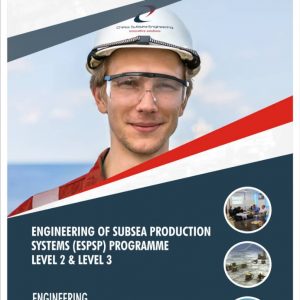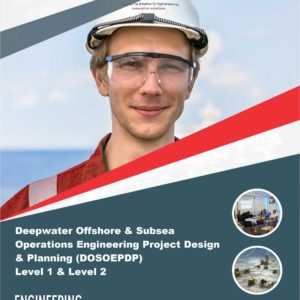Description
The SODA Level 1 & Level 2 course provides comprehensive training on the processes, regulations, and technical aspects of offshore decommissioning and abandonment of oil and gas facilities.
This course covers the fundamental concepts of decommissioning, including project planning, environmental considerations, regulatory requirements, and the various techniques and methods used in offshore facility decommissioning.
Participants will learn about the different stages of decommissioning, such as well plugging and abandonment, topside removal, subsea infrastructure removal, and site remediation, through theoretical lectures, case studies, and practical exercises.
The Level 1 course focuses on introducing participants to the key aspects of offshore decommissioning, including project management, stakeholder engagement, risk assessment, and regulatory compliance.
Level 2 builds upon the knowledge gained in Level 1 and delves into more advanced topics, such as advanced structural analysis, subsea infrastructure removal techniques, and the management of hazardous materials during decommissioning operations.
Offshore Decommissioning & Abandonment (SODA) Level 1 & Level 2 covers Decommissioning Legislation Framework, Practical Considerations, Decommissioning Programme Techniques & Tools, Safety Regulations, Pipelines, Offshore / Subsea Systems Decommissioning, Decommisioning Case Studies with emphasis on Inventory of Materials, Removal & Disposal Options, Selected Removal & Disposal Option, Wells, Drill Cuttings, Environmental Impact Assessment, Interested Party Consultations, Costs, Schedule, Project Management & Verification, Debris Clearance, Post-Decommissioning Monitoring & Maintenance and more.
Course Outlines
Introduction to Offshore Decommissioning & Abandonment
Decommissioning Legislation Framework
Practical Considerations
Decommissioning Programme
Techniques & Tools
Safety Regulations
Pipelines, Offshore / Subsea Systems Decommissioning.
BP Miller Platform Decommissioning
Executive Summary
Background Information
Description of Items to be Decommissioned
Inventory of Materials
Removal & Disposal Options
Selected Removal & Disposal Option
Wells
Drill Cuttings
Environmental Impact Assessment
Interested Party Consultations
Costs
Schedule
Project Management & Verification
Debris Clearance
Post-Decommissioning Monitoring & Maintenance
Supporting Studies
Technical Support References
Ref 1: Overview of offshore and subsea structures
Ref 2: Reasons for decommissioning
Ref 3: Offshore decommissioning regulations and guidelines
Ref 4: Comparative analysis of decommissioning strategies
Ref 5: Well plugging and abandonment
Ref 6: Topside and subsea removal
Ref 7: Offshore decommissioning alternatives to complete removal
Ref 8: Offshore decommissioning project management framework and principles
Ref 9: Offshore decommissioning project initiation and planning
Ref 10: Offshore decommissioning risk management and mitigation strategies
Ref 11: Offshore decommissioning stakeholder engagement and communication
Ref 12: Overview of offshore and subsea structures and equipment
Ref 13: Offshore decommissioning dismantling and demolition techniques
Ref 14: Offshore decommissioning environmental considerations
Ref 15: Offshore decommissioning waste management and disposal
Ref 16: Offshore decommissioning procurement strategies and options
Ref 17: Offshore decommissioning contracting models and structures
Ref 18: Offshore decommissioning contractor selection and management
Ref 19: Offshore decommissioning cost estimation and budgeting
Ref 20: Offshore decommissioning liability and insurance
Ref 21: Offshore decommissioning tax and legal implications
Ref 22: Case studies of offshore and subsea structures decommissioning
Ref 23: Offshore decommissioning best practices and lessons learned
Ref 24: Offshore decommissioning future trends and challenges
Ref 25: Offshore decommissioning Cost Estimation Example
Ref 26: Offshore decommissioning Environmental Impact Assessment Example
Ref 27: Offshore decommissioning Risk Assessment Example
Ref 28: Salvage Value Calculation Example
Ref 29: Offshore decommissioning Liability Calculation Example
Ref 30: Offshore decommissioning Decommissioning Bond Calculation Example
Assessment
Participant underpinning knowledge of Offshore Decommissioning & Abandonment will be accessed with short answer multiple-choice questionnaire at the conclusion of the course.
Outcome
Participants will gain an in debt understanding of Offshore Decommissioning & Abandonment.They will also be able to function with minimum supervision as a Decommisioning Engineer for IOCs, subsea pipeline company contractor, vendor or installation company.
Professional Certificate
Issued directly by Chess Subsea Engineering Europe.
Participant may be presented for Offshore Petroleum Training Organization (OPITO) Certification.
How to Register
Click here to download registeration booklet on msword and email completed booklet to info@chesssubseaengineering.org directly.










